ANURAG MALLICK visits the valley between Tamil Nadu’s Anamalai Hills and Kerala’s Nelliyampathy Hills to spot the Parambikulam Frog, Asia’s largest teak tree and other natural wonders
The dime-sized frog with bloodshot eyes stood still as it contemplated its next move while two pairs of eyes peered at it intently. My guide held up his palm animatedly, as if he had just been asked by a child to freeze momentarily. Then very slowly in a thick Malayali accent, he mouthed the words ‘Pa-ram-bi-kul-am Fro…g’ and twitched his eyes in that direction. It was enough to send the tiny amphibian scurrying into the foliage, but not before a few photographs had been clicked.
We were deep within Parambikulam Wildlife Sanctuary at a forest camp at Kuriarkutty on the banks of the Parambiar River. Here Dr. Salim Ali had spent 3 years (1936-39) watching hornbills. In commemoration, a bird’s gallery and audiovisual programs marked the Salim Ali Bird Interpretation Centre. It was on hallowed ground we had seen the Parambikulam Frog (Tomopterna parambikulamana), a creature so range specific, it was endemic to the sanctuary.
There was good reason why Parambikulam made it as one India’s 39 claimants to the UNESCO World Heritage tag. Located just south of the Palakkad Gap in the Western Ghats, it has been the scene of many scientific rediscoveries. Koori (Haplothismia exanulata), a saprophytic plant occurs only in heavy monsoons during the ‘climatic climax’, when weather conditions are ideal for its growth, yet its dependence on ideal conditions makes its life span tragically short. After a long gap, it was found here in 1951.
The park boasts 285 such rare, endemic and endangered plants, 1438 flowering species and 81 species of orchids. The rivers teem with 47 fish species, including the endangered Mahseer and Garra surendranathanii, a ray-finned suckerfish endemic to the Chalakudy River. After seeing the park’s namesake species we retired to our Treetop Hut overlooking Thunakadavu reservoir with a great sense of achievement.
The next morning we set off on a wildlife safari to Sungam range, the forest track leading us 6.8 km to the Pride of Parambikulam – the Kannimara Teak. Literally, the ‘first tree’, the lone 450-year-old specimen dated back to a time when natural teak forests covered the entire area. Rising up to 48.5 m with a girth of 6.57 m, it took five people with arms outstretched to encircle it completely. One of the oldest and largest ‘natural’ living teak trees in the world and the largest in Asia, the tree was awarded the ‘Mahavriksha Puraskar’ by the Indian Government in 1994.
During the 19th century the British had felled most of the original teak forests for timber by exploiting local tribal labour. Massive tree trunks were taken to the ‘top’ of the mountain slope and allowed to ‘slip’ down into the river, the practice eventually giving the place its name. Top Slip currently forms the tourism zone of Tamil Nadu’s Indira Gandhi Wildlife Sanctuary on the eastern slope of the Western Ghats. In 1905, a more efficient system was devised. The Cochin Forest Tramway directly transported teak from Parambikulam to Chalakudy before shipping it to the rest of the world from Cochin Harbour as Cochin Teak. Ironically, it was the revenue generated from Parambikulam teak that led to the development of present day Cochin Port.
Contiguous with Anamalai Sanctuary, the undulating park spread around seven major valleys and three river systems, dammed at Parambikulam, Thunakadavu and Peruvaripallam under the Par-Alayar Project in the 1950s. The 20.6 sq km reservoir harboured several aquatic fauna, including muggers, which often looked like sun-dried logs peeping through the water. Besides rowboats and bamboo rafting on the reservoirs, the active Forest Department organized a daylong Parambi Cruise in a Tribal Bamboo Houseboat, with on-board snacks and packed lunch.
The forest road climbed up the hillside to Dam View, a scenic vantage over the deep blue waters of Thunakadavu bracketed by Pandaravarai (1290 m) and Kuchimudi peaks. Valley View offered a sweeping glimpse of the picturesque Parambiar Valley, marked by the peaks of Kalynathy (1385 m) and Karimala (1439 m), the park’s highest point. We took an exhilarating boat ride in the reservoir to Veetikunnu Island, a cane forest bungalow located on a hilly islet (kunnu) of veeti (Sisam or Dalbergia latifolia).
For the true wildlife enthusiast, there was no dearth of things to do at Parambikulam with eco-tourism packages like overnight camping inside the forest, Full Moon Census or hiking 8km to an old Inspection Bungalow for Thellikal Nights. Guided treks included the Kariyanshola Trail, Hornbill Watching, Pugmark Trail and the scenic Cochin Forest Tramway Trek to Muthuvarachal.
Driving around Parambikulam was always rife with the possibility of a gaur, the park’s mascot, crashing through the undergrowth or a chance leopard sighting. Home to an impressive faunal array, Parambikulam harboured 39 mammalian species, including tiger, leopard, jungle cat, fox, bear, elephant, gaur, Nilgiri tahr, pangolin, loris and primates like bonnet macaque, Nilgiri langur and lion-tailed macaque. Of the 274 birds, Black-capped kingfisher, Broad-billed roller, Black woodpecker, Ceylon frogmouth, Malabar pied hornbill and Small pranticole were notable species.
The park was home to four adivasi communities – Kadar, Malasar, Muduvar and Malamalasar, who had been resettled in six colonies. Their indigenous knowledge made them critical partners in the eight EDCs (Eco-Development Committees) at Parambikulam. Even today, the scattered dolmens (flat memorial stones) of the tribal headmen still stand testimony to a time when man and beast lived in harmony in these forests.
Where to Stay
The Forest Department at Parambikulam Wildlife Sanctuary offers a wide range of accommodation options (Rs.2,500-5,000/day for 2-5 people). The two scenic Treetop Huts with double beds and attached baths in the reserve forest area overlooking the reservoir at Thunakadavu and Parambikulam are much sought after and have to be booked in advance. Elephant Valley Lodge at Thunakadavu and Bison Valley Lodge at Parambikulam have three double rooms each. Tented Niche, seven Swiss-style tents lie in a shady grove at Anappady. Anappady also has a Mahseer Dormitory for 40 people while Tiger Hall at Parambikulam can lodge 20; ideal for backpackers.
Birdwatchers can stay at the Salim Ali Centre at Kuriarkutty, which has a hall for 10 people. For a little privacy try Vettikunnu Island Nest on Parambikulam reservoir, a secluded island accessible by boat with stay in a renovated wireless station (6 people). Bay Owl Shed at Bagapallam, Tahr Shed at Vengoli and Cane Turtle Shed at Thuthanpara accommodate five people each. Overnight camping is possible at Sambar Machan at Kuriarkutty, Peacock Machan at Vengoli and Cheetal Machan at Anakal Vayal with five beds each. Two guides accompany the group and arrange packed food for a fee.
Bookings
Ecocare Centre, Parambikulam Wildlife Sanctuary, Anappady, Thunakadavu (PO), Via Pollachi, Palakkad, Kerala 678 661. Ph 04253 – 245025, 245005 Email bookings@parambikulam.org www.parambikulam.org
Entry Fees & Charges
Gate timings 7am – 6 pm (entry closes at 4pm)
Vehicle Fee Rs.50 (Light), Rs.150 (Heavy)
Entry Fee Rs.10 Indians, Rs.100 Foreigners, Camera Rs.25, Video Rs.150
Where to Eat
Being a wildlife preserve in an isolated pocket, eating options are few and basic. Parambikulam, the last settlement where the road ends, has a few eateries and Hotel Everest (Ph 04253-277 235) is the pick of the lot. South Indian staple like idli and dosa are on offer for breakfast while meals with fish fry and chicken curry are popular for lunch and dinner. It’s best to order food in advance. Sree Hotel (Ph 04253-277 217) and Sri Lakshmi Hotel (Ph 04253-277 234) are other options.
What to Buy
The Eco-Care Centre at Anappady sells park memorabilia like T-shirts, caps, picture postcards and stickers as well as bottles of honey and jam.
FACT FILE
Location: Situated in South East Palakkad, Parambikulam lies in the valley between the Anamalai ranges of Tamil Nadu and Kerala’s Nelliyampathy ranges of the Western Ghats.
Area: 643.66 sq km: 390.89 sq km Core Area (Critical Tiger Habitat), 252.77 sq km Buffer Zone
Altitude: 600 m to 1438 m above sea level
Climate: Mostly cool and damp interspersed with light to heavy drizzles around the year. Heavy rains lash the sanctuary between June-August. Eastern areas get more rain during Oct-Nov. Temperature ranges from 15 C to 32 C and drops substantially at dawn and dusk.
When to go: Unlike other parks, in the rains, the Forest Department also organizes Monsoon Tourism from June-August, though the best time to visit is September to March.
Getting There
By Air: The nearest airport is Coimbatore, 100 km away, also an important rail link.
By Rail: The nearest railway station is at Pollachi, 39 km away
By Road: Parambikulam is 98 km from Palakkad. There is regular bus service from Pollachi (6 am, 3 pm) to Parambikulam via Anamalai (2 hrs) and Top Slip (11:20 am). From Palakkad, drive south to Kollengode, get on to Pollachi road and turn right from Ambrampalayam towards Anamalai, Sethumadai, Top Slip, Thunakadavu and Parambikulam, each place 12 km from each other. The Parambikulam Office Headquarters at Anappady is 4 km from Top Slip. The nearest petrol pump and ATM outlet are at Vettaikaranpudur, 23 km from Anappady.
Author: Anurag Mallick. This article appeared in the Sep-Oct 2012 issue of Saevus Wildlife magazine.
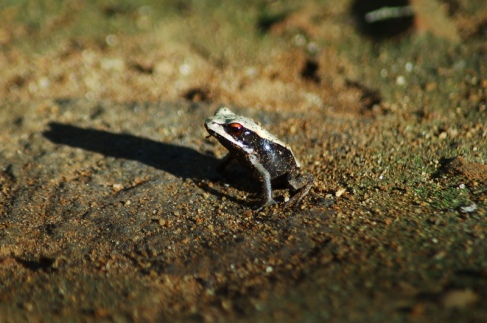
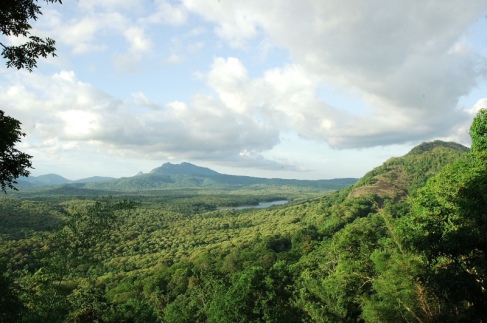
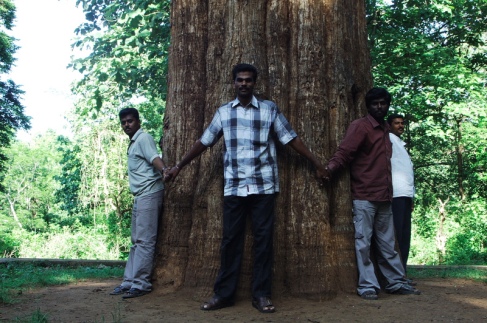
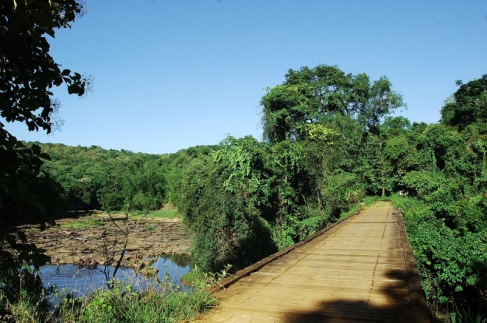

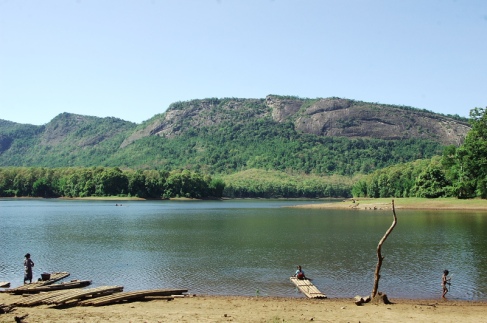

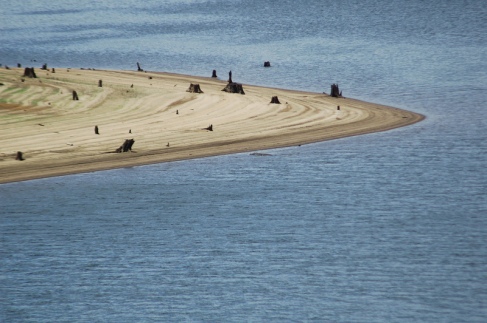
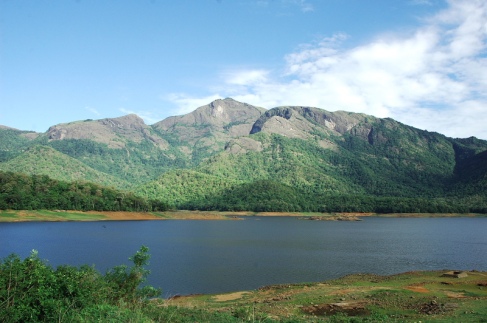
It sounds like you were lucky to snap a picture of the red-eyed frog! Parambikulam Wildlife Sanctuary seems to possess a hotbed of rare plants and species.
Stunning park… yes, truly lucky to encounter the endemic Parambikulam Frog, that’s so range specific, it’s not sighted anywhere outside the sanctuary. Great gaur (Indian bison) and leopard sightings too!